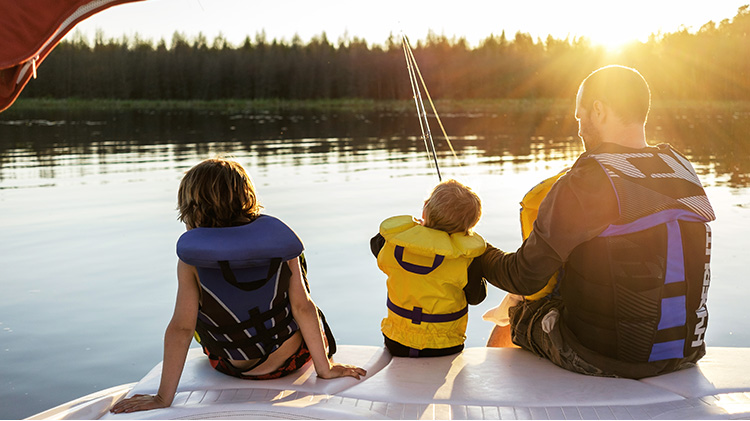Skincare in the sun: Why is sunscreen important?
Learn the ins and outs of sun protection and the importance of sunscreen with this handy infographic.
At one point or another, you've probably been told to put on sunscreen. But why? Why is sunscreen important and what does it actually do? Let’s break down why sunscreen is a smart idea — one you might want to apply more often.
Why use sunscreen?
Among the many benefits of sunscreen, it can help prevent you from getting painful sunburns. While sunburns can be uncomfortable, they also signal potential long-term skin damage from UV rays, which can lead to skin cancer. It takes about 15 minutes for the sun to begin damaging your skin, so it’s important to be proactive with your protection.
What is SPF?
You see it on every bottle of sunscreen, so naturally one has to wonder: what is SPF? Short for ‘Sun Protection Factor’, SPF is a numeric system meant to approximate how long a person can stay in the sun while wearing that particular sunscreen before their skin begins to burn. As explained by The Skin Cancer Foundation, presuming the sunscreen is fully and correctly applied, skin protected by SPF 30 sunscreen will be protected from the harmful effects of the sun for 30 times longer than if the person were not using sunscreen. The higher the number, the greater the amount of protection from harmful UV rays.
Who should use sunscreen?
Everyone over the age of six months can benefit from wearing sunscreen. According to the American Academy of Dermatology, sunscreen has been shown to reduce the risk of developing skin cancer.
What to look for in a sunscreen
The American Academy of Dermatology recommends sunscreen that has:
- Broad-spectrum protection, which shields UVA and UVB rays.
- UVA rays cause lasting skin damage and contribute to skin aging.
- UVB rays cause sunburns and skin damage.
- Sun protection factor (SPF) of 30 or higher.
- Higher SPF equals more protection, but no sunscreen blocks 100% of UV rays.
- Higher SPF equals more protection, but no sunscreen blocks 100% of UV rays.
- Water-resistance to withstand water sports and sweating.
- Water resistant: effective up to 40 minutes in water.
- Very water resistant: effective up to 80 minutes in water.
- No sunscreen is completely waterproof.
Consider avoiding combination products, such as moisturizer with SPF or sunscreen with insect repellent, as sunscreen needs to be reapplied more often.
When to wear sunscreen
Any time you're exposed to the sun, wear sunscreen. It’s as simple as that. Keep in mind the sun is out even when the UV is low; UV rays can still reach your skin on a cloudy day. Sun protection isn't just for summer — snow, sand and water are all capable of reflecting harmful UV rays.
When to apply sunscreen
- 15 to 20 minutes before sun exposure
- After swimming
- Following any period of excessive sweating
- Reapply two hours after every application
How to apply sunscreen
Apply sunscreen to any skin that’s exposed to sunlight. Don't forget to apply to your:
- Ears
- Neck
- Scalp
- Face and lips
- Tops of feet
- Backs of hands
Use at least one ounce, about the size of a quarter, to cover each exposed area.
Types of sunscreens for different parts of the body
Surprisingly, different parts of the body tend to see better results from different types of sunscreens. Look at the specific brand you’re using, but here’s a general guide:
- Face: Cream sunscreen
- Scalp: Gel sunscreen
- Around the eyes: Stick sunscreen
- Body: Lotion or spray sunscreen
Applying sunscreen before going out in the sun can help save your skin. But sunscreen on its own might not be enough. Consider using sunscreen in combination with sun-protective clothing, a hat (preferably wide-brimmed) and sunglasses with UV-rated protection. And whenever feasible, seek shade or covered outdoor areas to help beat the heat.





